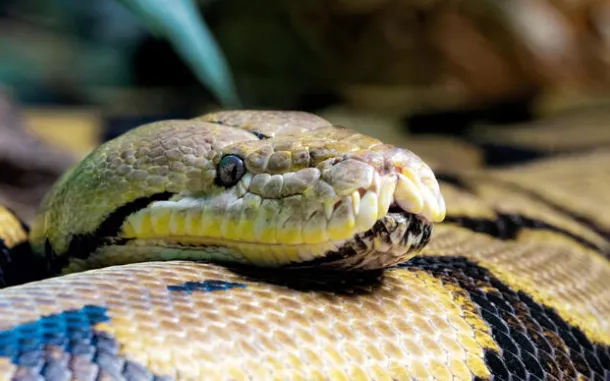
Table of Contents
Scientific Classification
- Kingdom: Animalia
- Phylum: Chordata
- Class: Reptilia
- Order: Squamata
- Family: Pythonidae
- Genus: Python
- Species: Python reticulatus
Quick Overview
The Reticulated Python (Python reticulatus) is an awe-inspiring and non-venomous snake, celebrated as one of the world’s largest snake species. Indigenous to Southeast Asia, these serpents have fascinated and captivated people for centuries due to their enormous size and striking appearance.
Fast Facts
- Scientific Name: Python reticulatus
- Lifespan: Estimated to be around 15-20 years or more in captivity.
- Average Size: Adult Reticulated Pythons often reach lengths between 10 to 20 feet, with some exceptional individuals exceeding 25 feet.
- Diet: Carnivorous, with a preference for mammals, including birds and other reptiles.
- Habitat: Varied, found in environments ranging from rainforests to grasslands and near water sources.
Did you know?
Reticulated Pythons are known for their exceptional length and can rival the Green Anaconda for the title of the world’s longest snake.
Appearance
The Reticulated Python is famous for its distinctive appearance. It possesses a complex pattern of dark, geometric shapes on a background of light brown or yellow. This intricate pattern gives the species its name “reticulated.” Their scales are shiny and iridescent, adding to their visual appeal.
Size and Weight
As one of the world’s longest snake species, Reticulated Pythons can attain impressive lengths. Adults typically measure between 10 to 20 feet in length, with records of some individuals exceeding 25 feet. These pythons are also quite heavy, with the largest specimens weighing over 350 pounds.
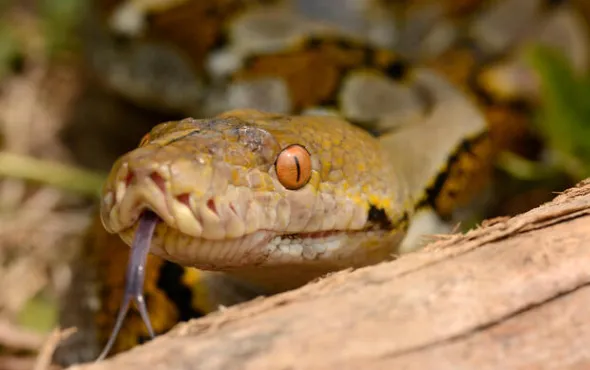
Temperament and Behavior
Reticulated Pythons are typically solitary and are known for their ambush-style hunting. They use their keen sense of smell to locate prey, which they then seize with their powerful bodies. When encountered, they are not particularly aggressive but may defend themselves if they feel threatened.
Fun Fact
Reticulated Pythons have a fascinating and efficient heat-sensing labial pit system, which allows them to detect the infrared radiation emitted by warm-blooded prey. This unique adaptation helps them locate
food even in complete darkness.
Habitat and Distribution
Reticulated Pythons are native to Southeast Asia, where they are found in a variety of ecosystems, from dense rainforests to grasslands. Their distribution spans countries such as Indonesia, Malaysia, the Philippines, and parts of India.
Care Guide
Reticulated Pythons are not recommended as pets for the average reptile enthusiast due to their size, specific habitat requirements, and their potential to be dangerous if not handled properly. These snakes are best left to experienced herpetologists or professional facilities.
Diet and Nutrition
In the wild, Reticulated Pythons primarily feed on mammals, including rodents and birds, although they may also consume other reptiles. When kept in captivity, they are usually fed appropriately-sized frozen-thawed prey, which provides a balanced diet.
Health and Wellness
Caring for Reticulated Pythons requires expertise, as they have specific environmental needs. Ensuring a safe and spacious enclosure, monitoring temperature and humidity, and seeking professional veterinary care are crucial for their well-being.
Reproduction
Reticulated Pythons reproduce by laying eggs. Females can lay clutches that may contain up to 80 eggs, which are then incubated until hatching. In the wild, young pythons are left to fend for themselves.
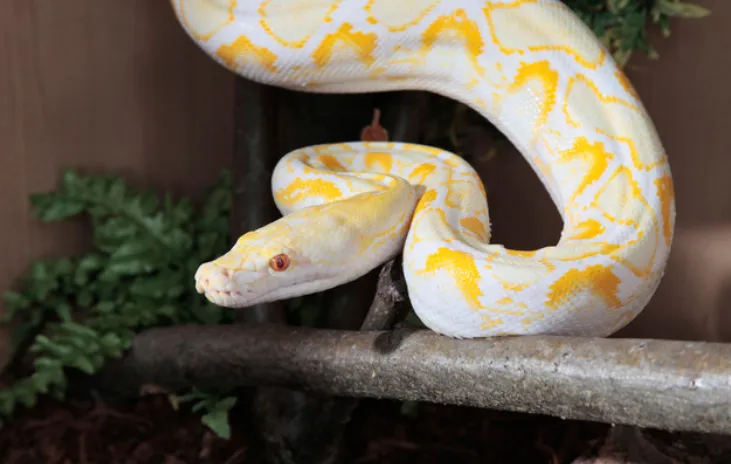
Conservation Status
Reticulated Pythons are not considered endangered; however, they are subject to habitat loss and poaching for their skins and the pet trade. Protection measures are necessary to safeguard their populations and habitats.
Photo Gallery
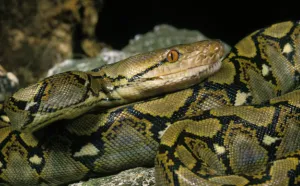

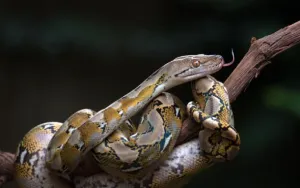
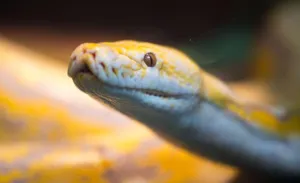
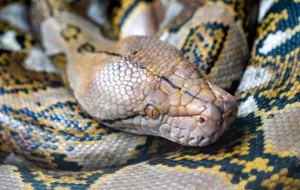

Related Profiles
Share This Profile
3 Amazing Facts About Reticulated Pythons
- Powerful Constrictors: Reticulated Pythons are renowned for their powerful constriction, which allows them to subdue and swallow large prey. They can stretch their jaws to accommodate massive meals.
- Outstanding Swimmers: These snakes are skilled swimmers, often found near water sources. They can remain submerged for an extended period and are known to traverse large bodies of water.
- Exceptional Camouflage: Reticulated Pythons have a remarkably effective camouflage pattern that helps them blend seamlessly into their environment, making them almost invisible when they lie in wait for their prey.
- Enchi Ball Python: A Unique and Stunning Morph of Python regius - March 27, 2025
- Emerald Tree Monitor: The Enigmatic Green Guardian of the Rainforest - March 26, 2025
- The Egyptian Cobra (Naja haje): A Fascinating Serpent - March 25, 2025
